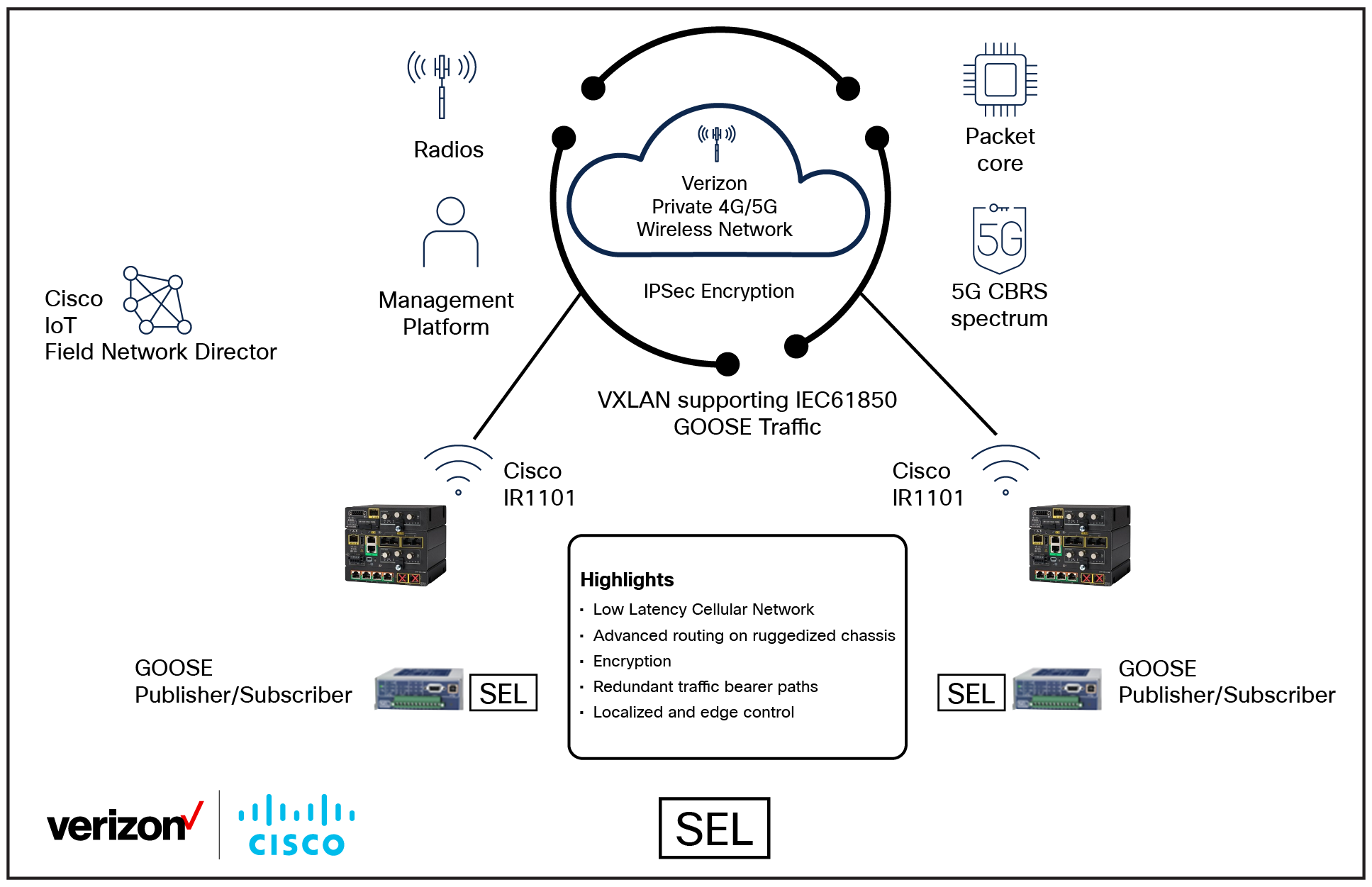Direct Transfer Trip Use Case over Cellular for DER Sites White Paper
Available Languages
Bias-Free Language
The documentation set for this product strives to use bias-free language. For the purposes of this documentation set, bias-free is defined as language that does not imply discrimination based on age, disability, gender, racial identity, ethnic identity, sexual orientation, socioeconomic status, and intersectionality. Exceptions may be present in the documentation due to language that is hardcoded in the user interfaces of the product software, language used based on RFP documentation, or language that is used by a referenced third-party product. Learn more about how Cisco is using Inclusive Language.
Wireless technologies offer an alternative solution to enable communications for the various distribution grid use cases. These technologies are especially useful in providing connectivity to the various Distributed Energy Resources (DER) assets and local distribution substations.
Typically, protection equipment will operate locally and does not use data from other devices to operate. However, some schemes do use communications for normal operations. One such scheme is Direct Transfer Trip (DTT), where upstream substations need to trip DER assets off the network in the event that the substation feeder breaker opens.
Traditionally, DTT signals were sent between substations and remote Distributed Generation (DG) sites using leased telephone lines. DTT systems are installed for critical high-speed tripping of circuit breakers on either side of a feeder interconnecting substations or between the substation breaker and a DG site’s station equipment.
Cisco and Verizon have undertaken work to validate the use of cellular networks to provide a flexible and easy-to-deploy connectivity solution to provide the backhaul technology. Today, cellular networks are reliable and can be deployed at a low cost compared to dedicated fiber.
The focus of this work was on leveraging standards-based and scalable communication technologies to provide encrypted connectivity between sites while supporting the transport of Layer 2 multicast non routable IEC 61850 GOOSE messaging in peer-to-peer topologies. Plus, the same solution will also natively allow Supervisory Control and Data Acquisition (SCADA) data to be transported within the same encrypted tunnels.
It was important to evaluate the latency, jitter, and packet loss applicable to these private and commercial cellular networks when applied to the DTT use cases:
● IEEE 1547-2018 states that for DTT operation, DER assets should be disconnected within 2 seconds (however, the communications budget for this operation is much smaller).
● Customer requirements for the actual communications budget range from 40 to 80 ms.
Cisco provided the Cisco Catalyst™ 1101 Rugged Router (IR1101), used widely in distribution automation networks today, with plug-in cellular modules to support the various commercial and private spectrum bands, including Citizens Broadband Radio Service (CBRS), Anterix, and commercial bands (such as FirstNet and First Responder).

Architecture of the Cisco and Verizon DTT system
Key points for the DTT use case:
● The DER site monitors upstream reclosers for a trip signal.
● The DER site disconnects itself from the grid when it receives the required trip signal.
● The Catalyst IR1101 router with Cisco® cellular plug-in modules is used to allow flexibility in the selected cellular module required.
● Standards-based VXLAN is used to transport the Layer 2 multicast GOOSE messages.
● IPsec/IKEv2 tunnels are used for security between all endpoints.
● Scalability is required for more complex topologies.
● Security, IPsec for WAN side encryption, and the Catalyst IR1101 router also support MACsec on the LAN ports with SEL-651R reclosers.
Cisco will be releasing an updated validated design for distribution automation that will include the DTT use case over cellular.
Cisco Catalyst IR1101 Rugged Router data sheet
Cisco IoT Field Network Director data sheet